It’s Day 6 of our South Africa Garden Tour and we drive from our Durban beachfront hotel about 30 miles to the Outer West region and the town of Kloof. We’re here to spend the morning and have lunch at Makaranga Lodge. Once the property of a wealthy and passionate plantsman, the late Leslie Riggall, who called it Fern Valley Botanical Garden, he developed it over 26 years, building a vast collection of camellias, magnolias, bromeliads and orchids, among other plants. He was especially knowledgeable about vireya rhododendrons, contributing to the Vireya Vine journal and growing them from seed. Many of the plants grow around a series of ornamental ponds fed by a stream running through the valley.
When Leslie and Gladys Riggall moved to Panama in 2002, their neighbours Danna and Chick Flack bought the 25-acre property and merged it with their own five acres. They renamed it Makaranga after the indigenous wild poplars (Macaranga capensis) growing by the stream in the valley and the Makaranga people of Inyanga, Zimbabwe, where Danna was born. While Chick Flack developed a 22-room five-star boutique hotel, conference centre and spa, Danna, took on the garden, which is now available for weddings and also simply for the enjoyment of guests. With the help of landscaper Phil Page and a gardening staff of 18, she designed a series of lush, flowing gardens around Leslie Riggall’s original plant collection, adding indigenous South African plants in evocative naturalistic settings, such as this small rocky koppie in front of the hotel.
As I start my tour, I pause, quite awe-struck to see such a large collection of cycads – one man’s passion donated to this garden. As a stock photographer, I can’t help but be a little excited, and stop to photograph the species, shown here in a mosaic array. Who was George Walters? I cannot find any background on him, but I hope someone sees his lovely collection online and thinks of him. (* Note in the comments below that George himself found his lovely collection here and commented!)
I walk down the hill and — peering over the bromeliads — see what has become quite a familiar sight in botanical gardens in North America: beautiful Zimbabwean sculpture, which seems so well suited to the leafy surroundings of this garden.
The collection is by renowned carver Joseph Ndandrika (1941-2002). This piece is titled Father & Son.
On the way to the valley gardens, I pass a giant rainbow gum (Eucalpytus degluptus), its multicolored trunk being caressed by another cycad, this one the Australian Macrozamia miquelii, known as “burrowang” down under.
I peer into the Japanese Garden built by Leslie Riggall. There are no blossoms on the trees, but we certainly saw Japanese cherries in full bloom in Johannesburg.
Here’s a familiar Japanese torii gate.
I get a little lost, but finally head down to Leslie Riggall’s original showplace: the lush Fern Valley filled with ponds, where giant South African tree ferns (Cyathea sp.) see their elegant fronds reflected in the water.
I veer off the road through the valley and take a path through manicured but jungle-like plantings……
….to arrive at the small waterfall that feeds the ponds.
Returning to the pond edge, I’m transfixed by this striking bird-of-paradise (Strelitzia nicolai), its purplish-black, crane-like flowers so similar yet so different from the orange-flowered birds (S. reginae) I’m used to seeing in conservatories in the northeast. Called the Natal wild banana, it is like a small tree and is one of the indigenous plants introduced to the valley to grow side by side with the camellias and tropical rhododendrons.
Speaking of rhododendrons, here is one of Leslie Riggall’s beloved Vireyas exhibiting its somewhat typical legginess. Native to southeast Asia, Vireyas provide an option for gardeners living in tropical and subtropical regions.
Seen close-up, the flowers are beautiful and its easier to see their resemblance to the rhodos I’m familiar with from gardens in the northern hemisphere.
This pond, surrounded by water-loving irises, is overseen by voluptuous statues imported from Italy.
But beauty doesn’t matter much to a white-breasted cormorant waiting for the visitors to leave so he can return to fishing. Look at the lush Gunnera manicata in the background.
Another view of this pond.
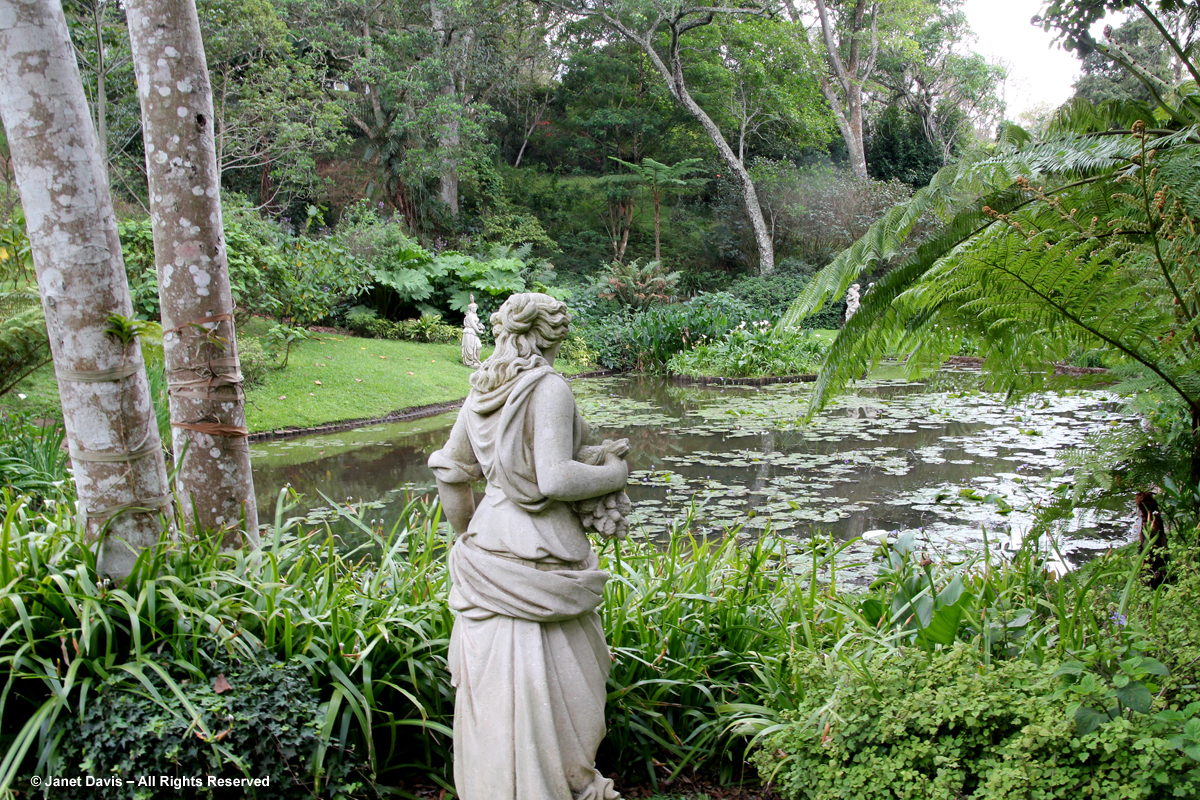
The calla lilies (Zantedeschia aethiopica) are spectacular here, and of course they’re native to damp places throughout South Africa. As a bee photographer, I’m fascinated by the numerous African honey bees patiently gathering pollen from the yellow spadix of the callas.
The bromeliad collection is lovely and I see staghorn ferns (Platycerium sp.) in this spot too.
The matchstick bromeliad (Aechmea gamosepala) is always eye-catching, especially when it’s in perfect flower like this one.
There are a few heliconias, like this attractive cultivar called ‘Red Christmas’.
This beautiful Streptocarpus floribundus is on the South African endangered list.
Lots of epiphytic orchids grow down here, carefully trained on tree trunks. I think this tree might be the eponymous wild poplar (Macaranga capensis) that gives the garden its name!
A closer look at the orchid. How beautiful.
And some nice specimens of Epiphyllum cacti are growing epiphytically on trees here as well.
I’ve seen kangaroo paws (Anigozanthos) in California, and love their crazy flowers.
Peering down paths here and there, I think how wonderful it is to see the plants we know as “tropical houseplants” deployed in this setting. Here are thickets of Brazilian Ctenanthe setosa flanking the path into the other side of the Japanese garden.
A little rainshower begins (hilly Kloof is in KwaZulu-Natal’s mist belt, where precipitation is frequent) and I try to keep my camera and notebook dry, while gazing at this pond, its surface spangled with tropical waterlilies.
Here is a familiar sight: beautiful yellow Iris pseudacorus looking as aggressive here in South Africa as it looks in North America. It does have a large native range, including Europe, western Asia and northwest Africa, but not down here. The bees do love it, however.
The rain is increasing and it’s time for lunch up at the lodge in any case. I return passing some of the indigenous gardens, so different from the plantings we saw down in the valley. There are various succulent flowers and a sprinkling of wild garlic (Tulbaghia violacea).
Here’s a fabulous and quite small watsonia, possibly the endangered Watsonia canaliculata.
And large aloes (Aloe ferox, I think) growing in the familiar grassland setting in which it thrives in nature.
I pass the swimming pool with raindrops splashing on the water surface. No one’s swimming today, but it’s a nice spot for the hotel guests to escape the summer heat of KwaZulu-Natal. And now it’s time to sit down, dry off a little and have some lunch. We have to keep up our strength, after all, for another garden this afternoon.

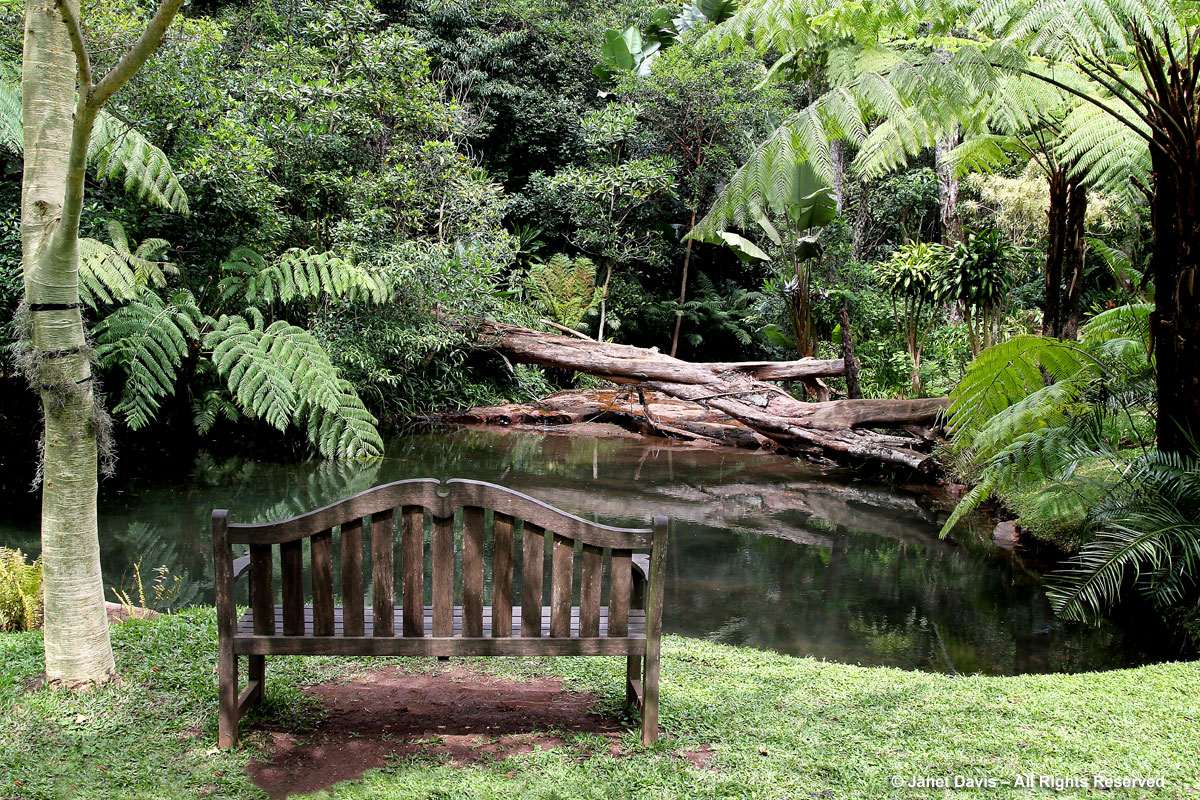
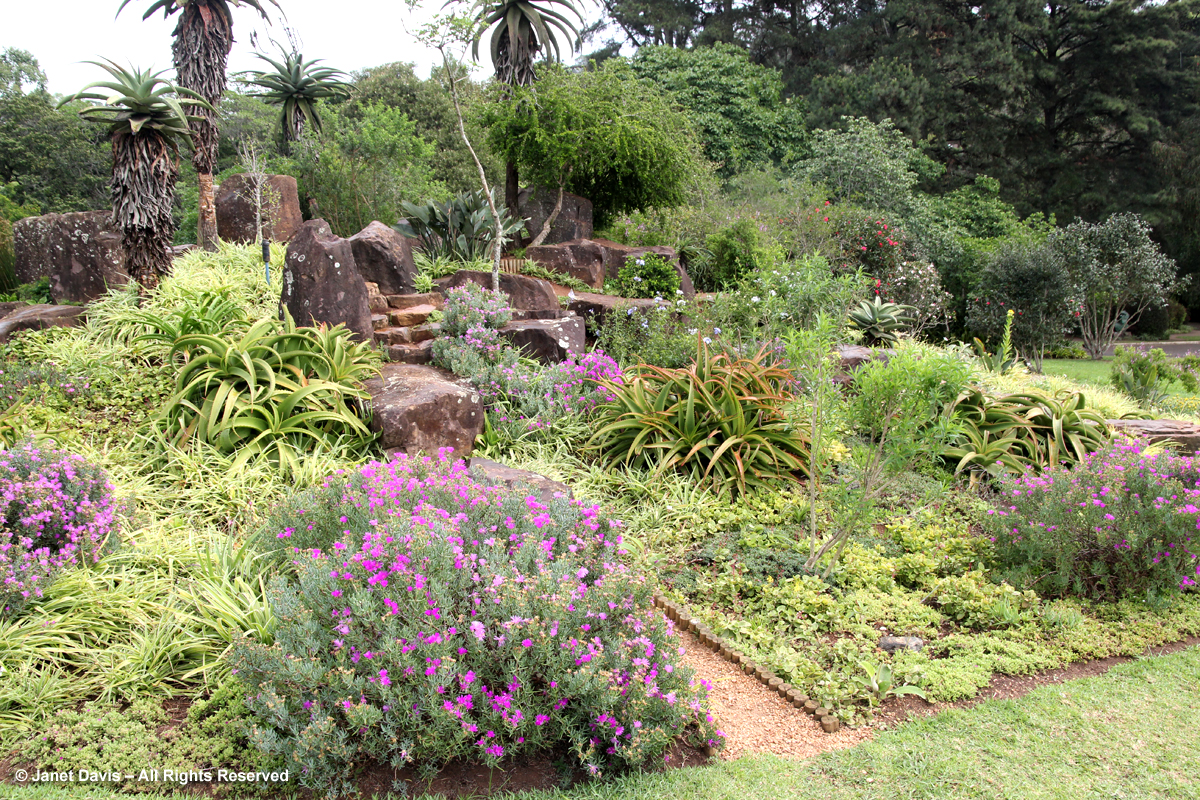
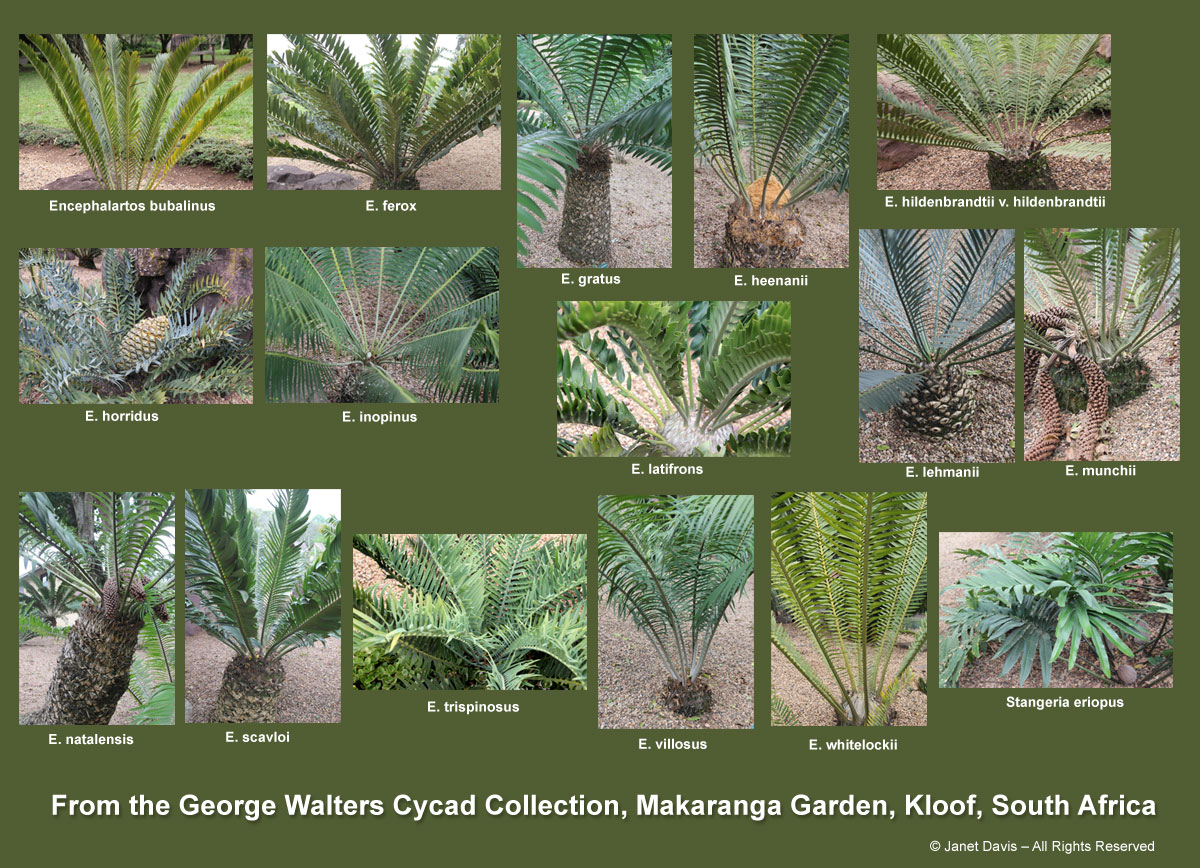
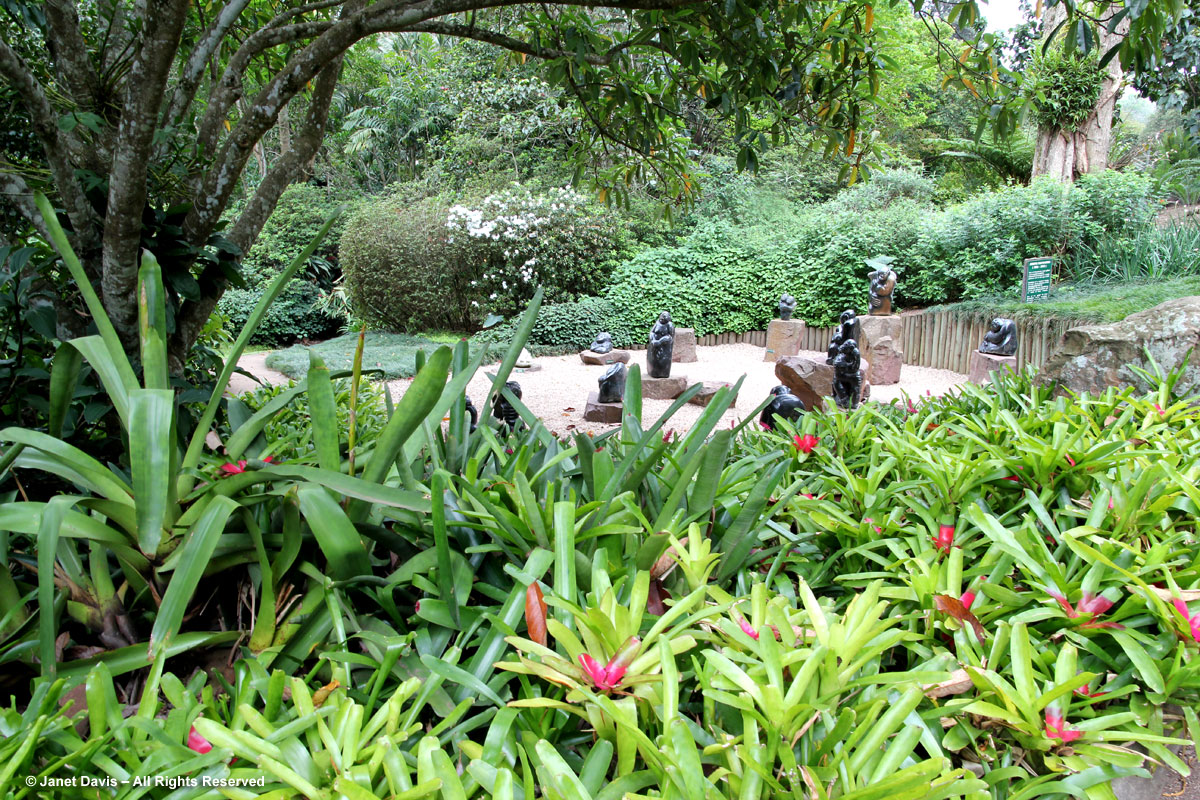
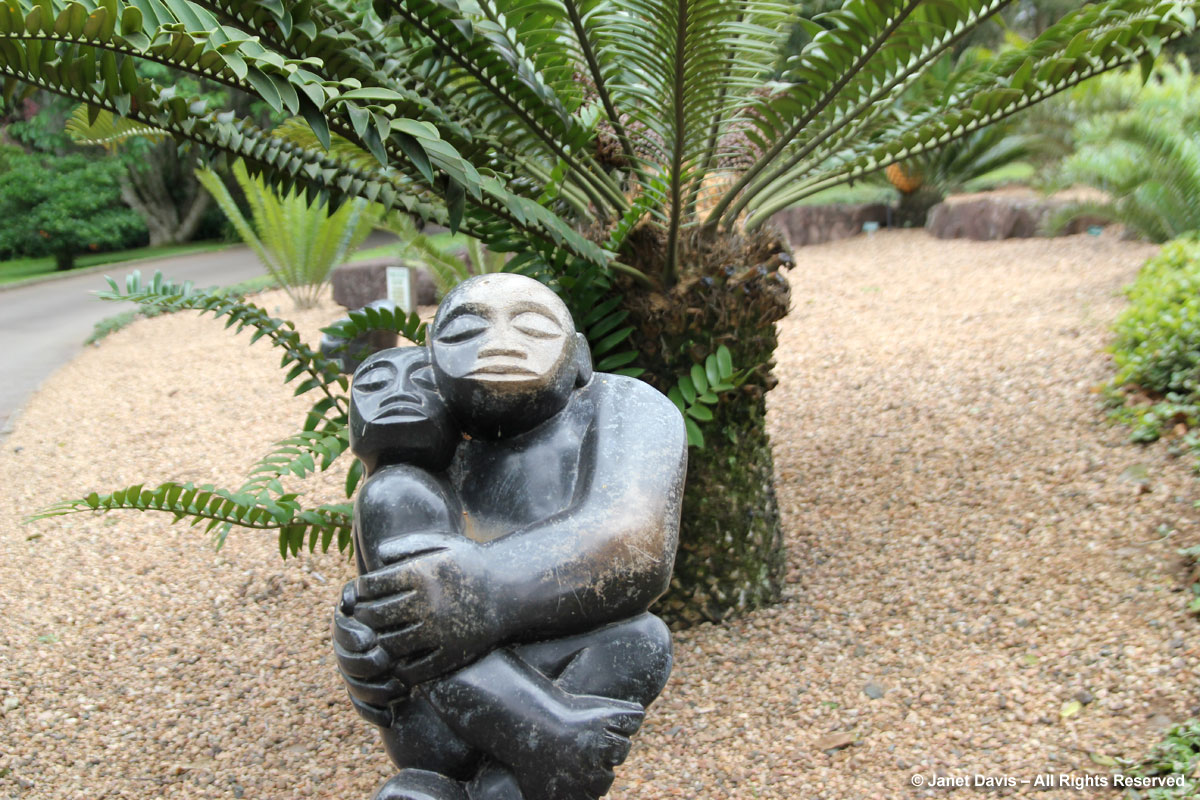
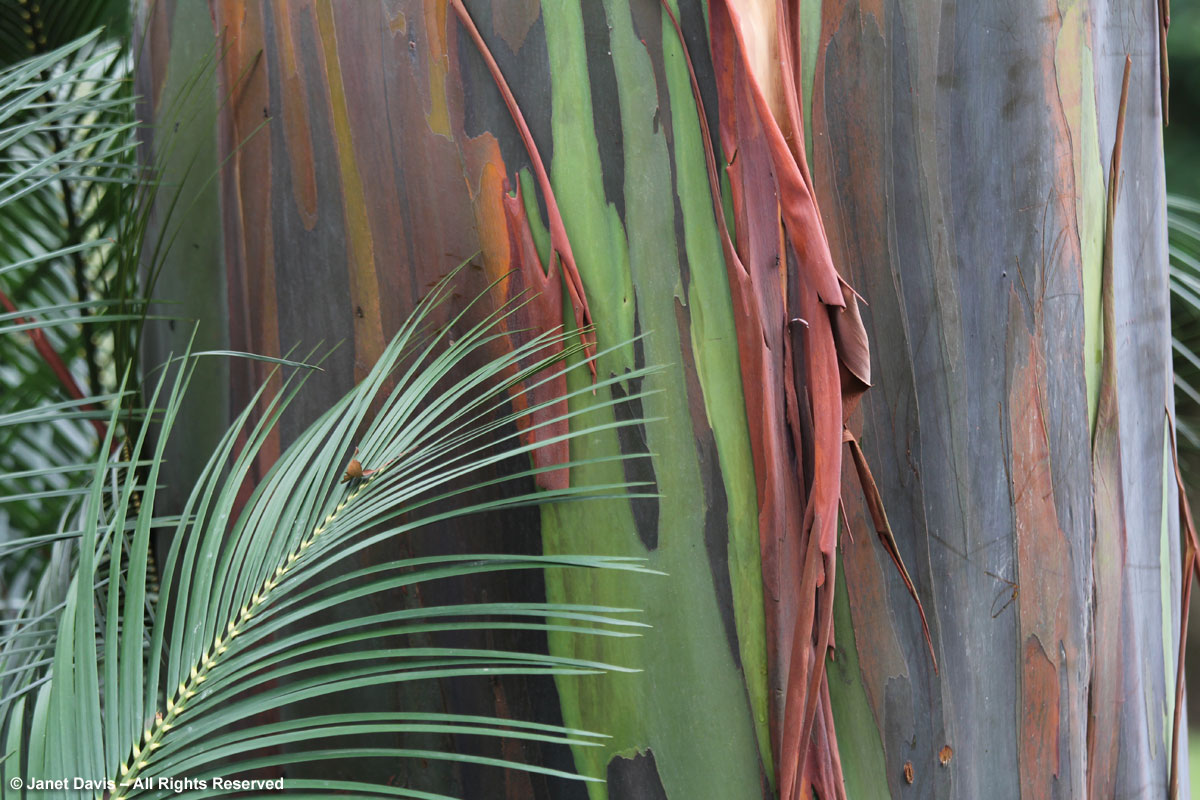
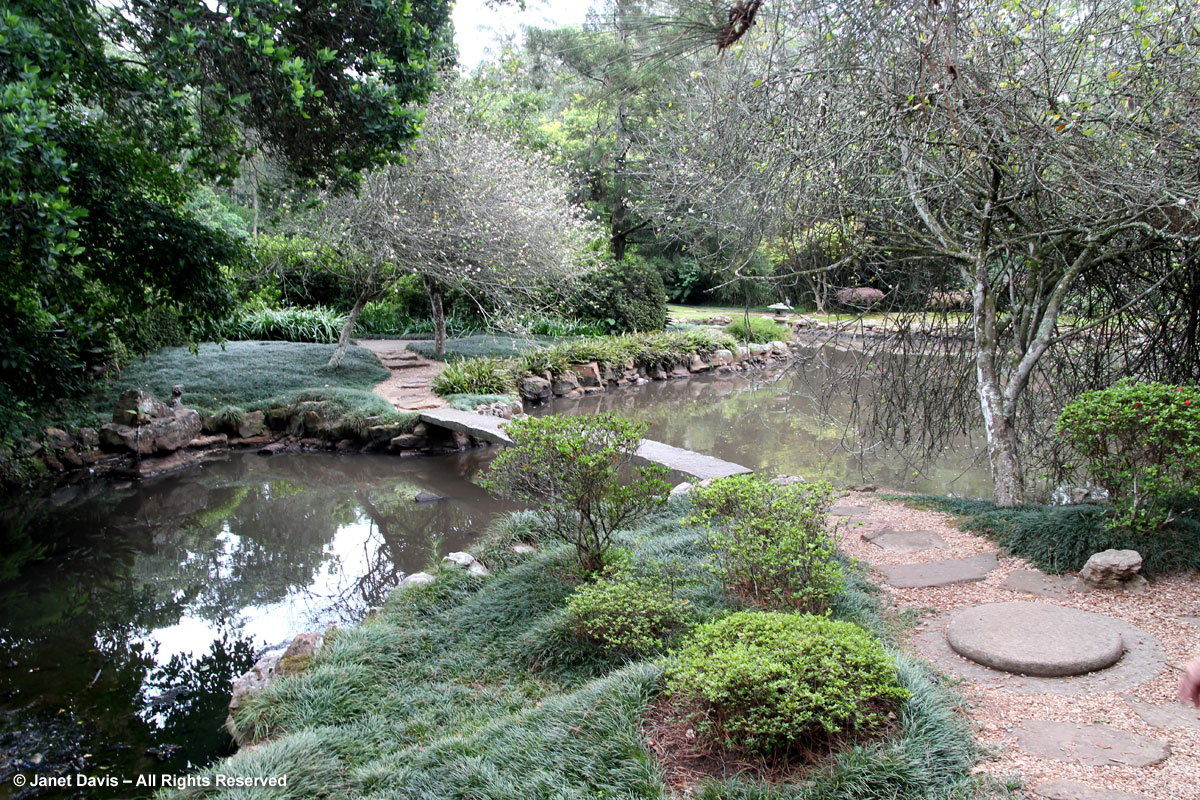
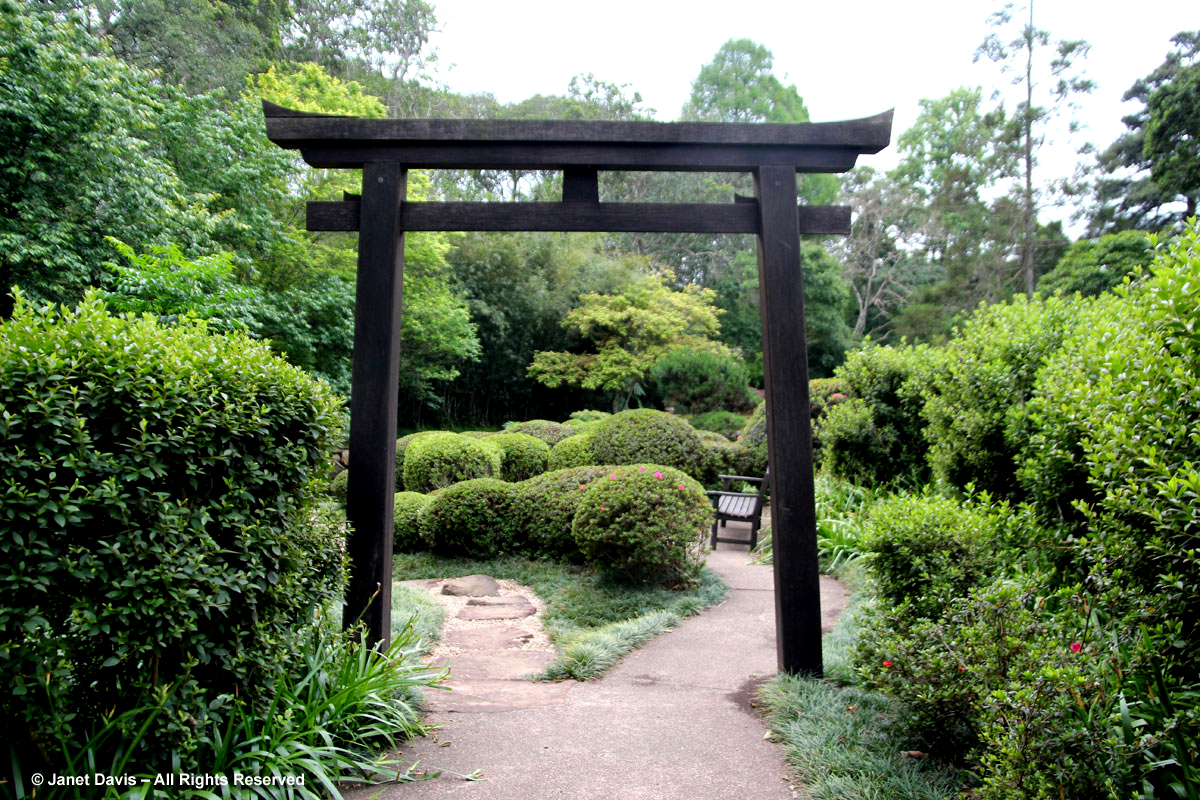
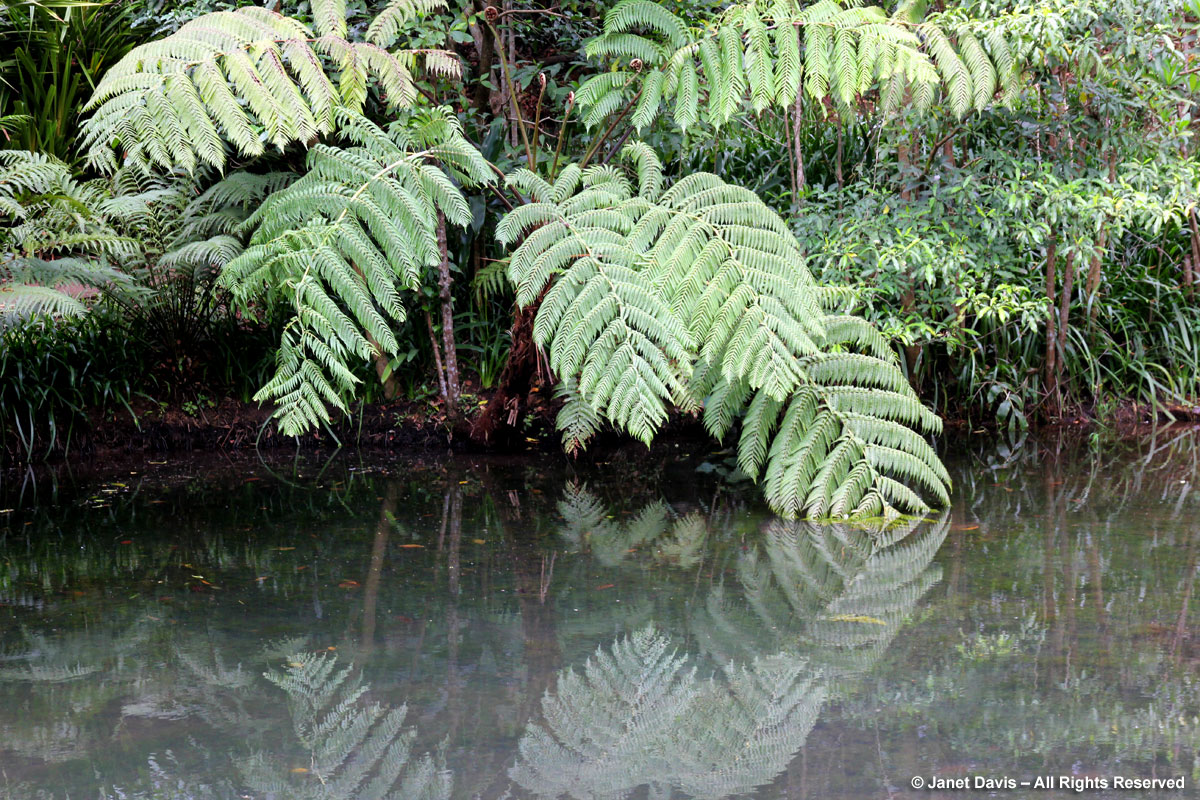
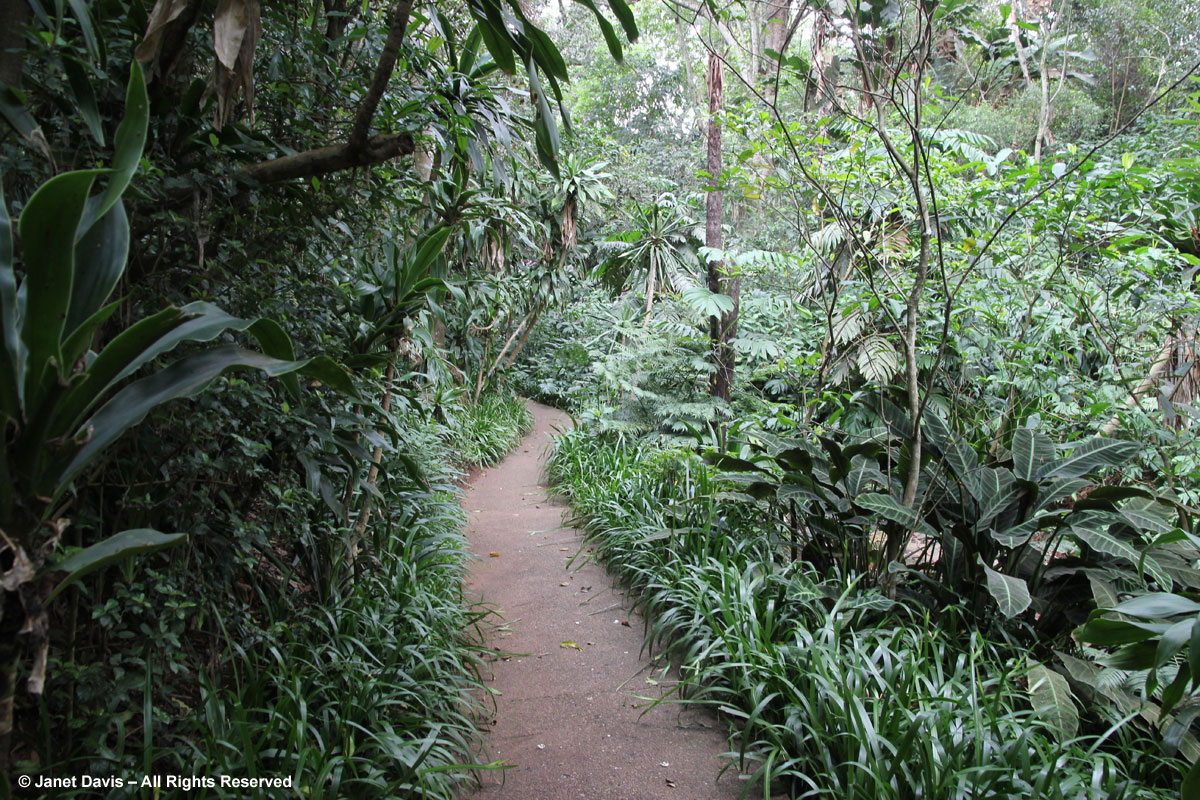
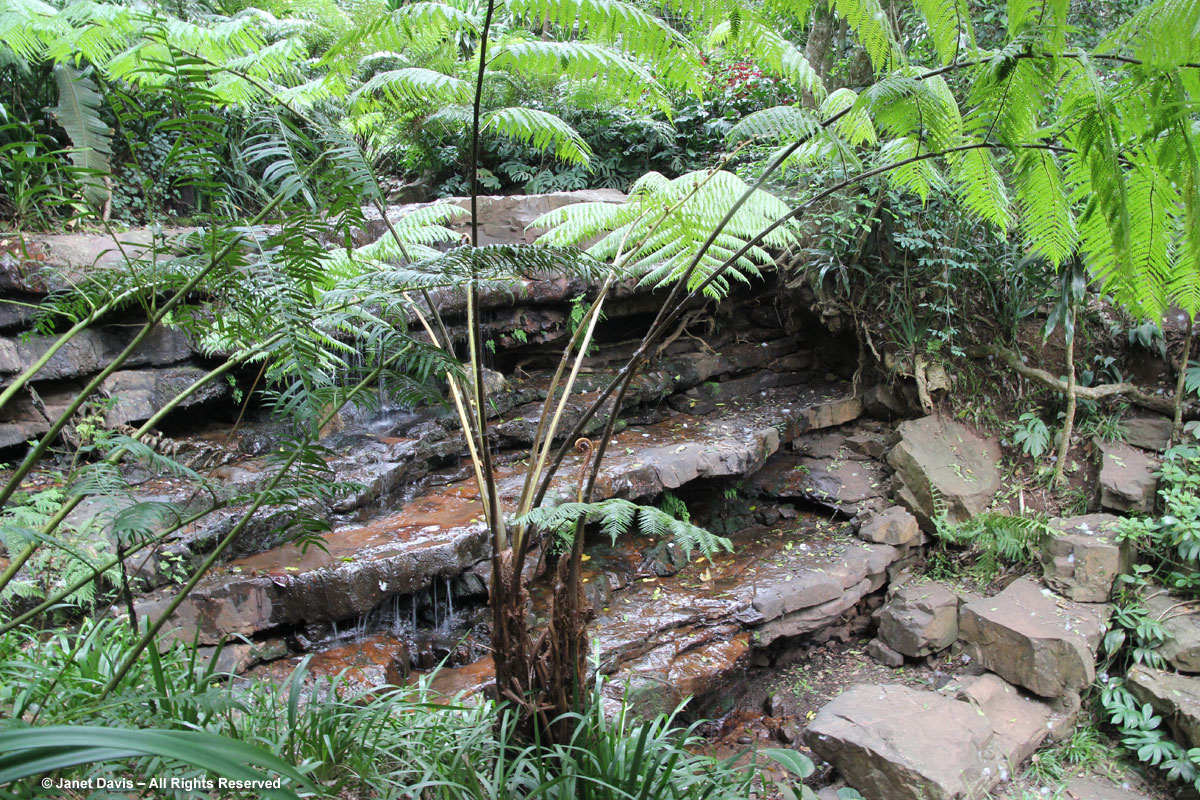
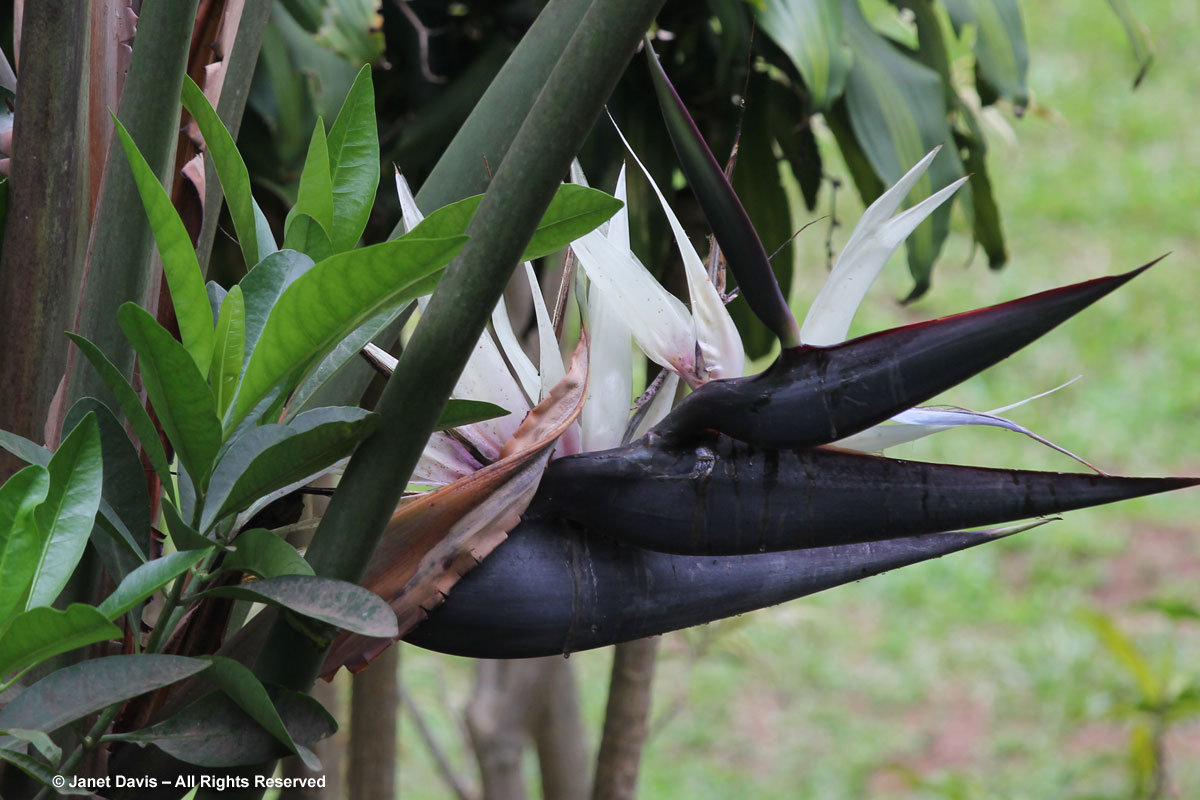
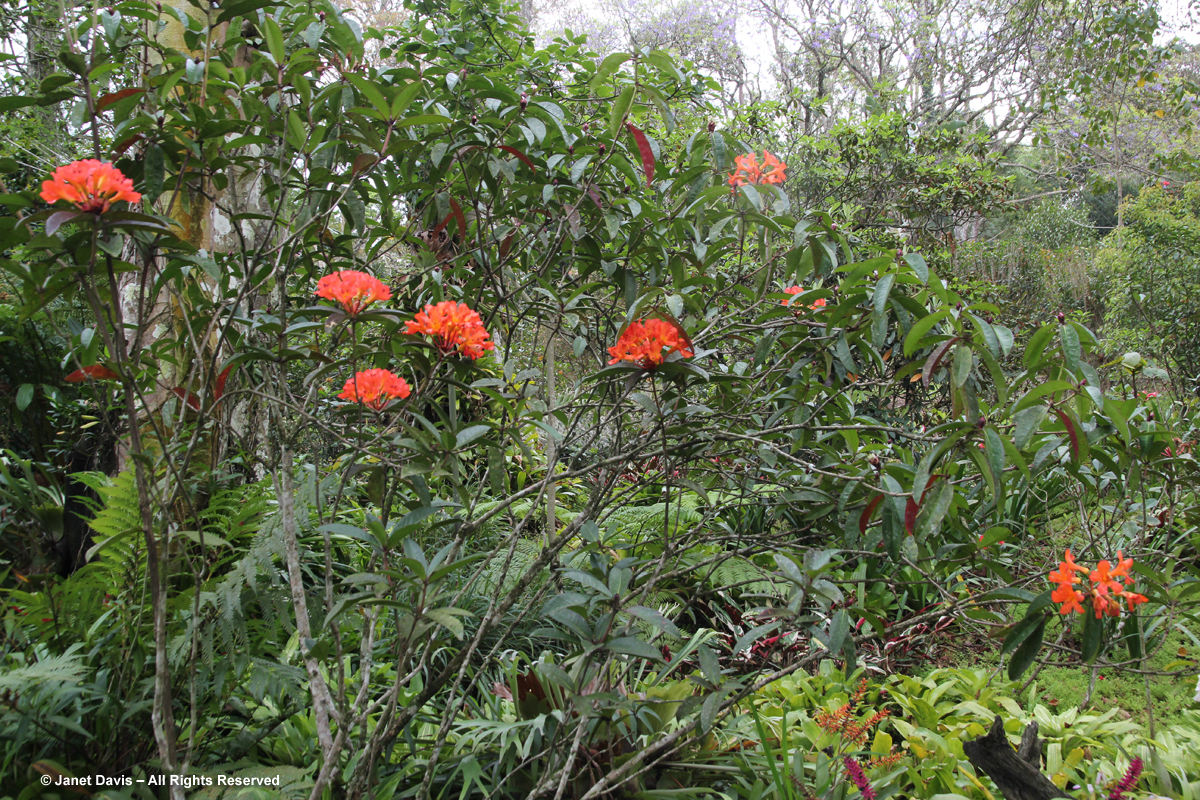
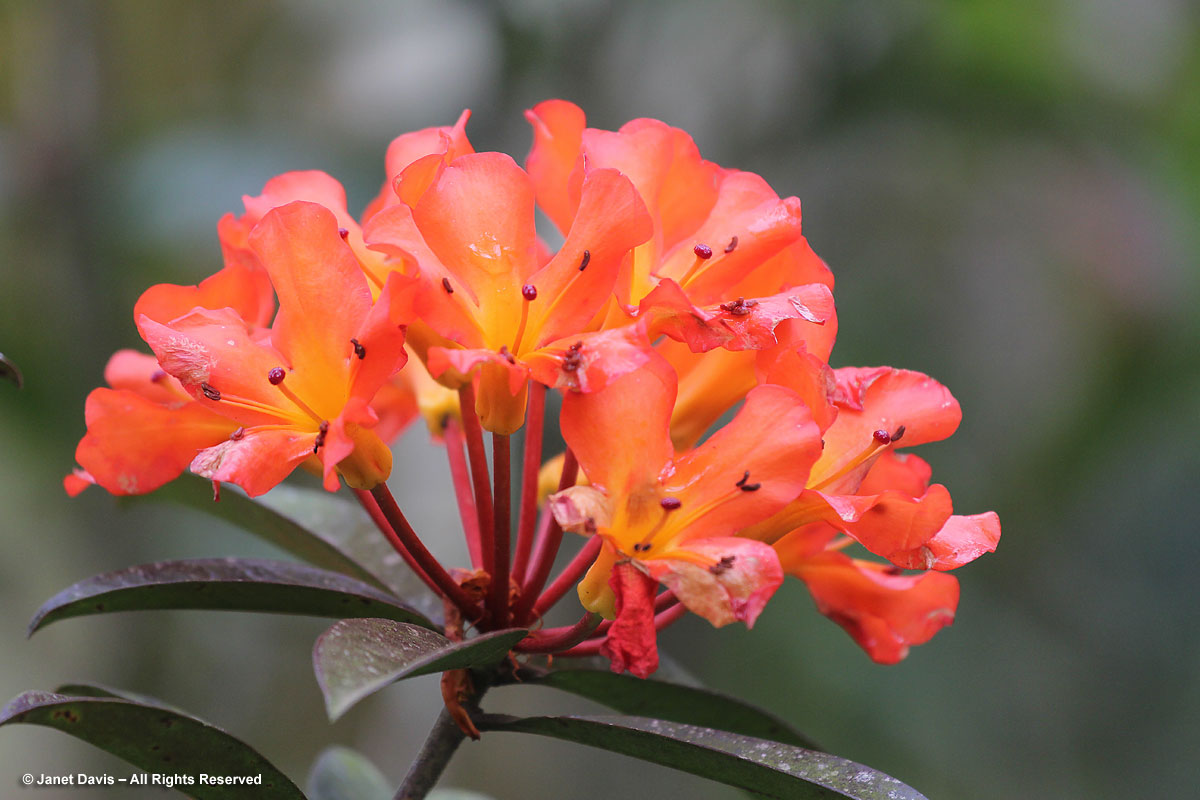
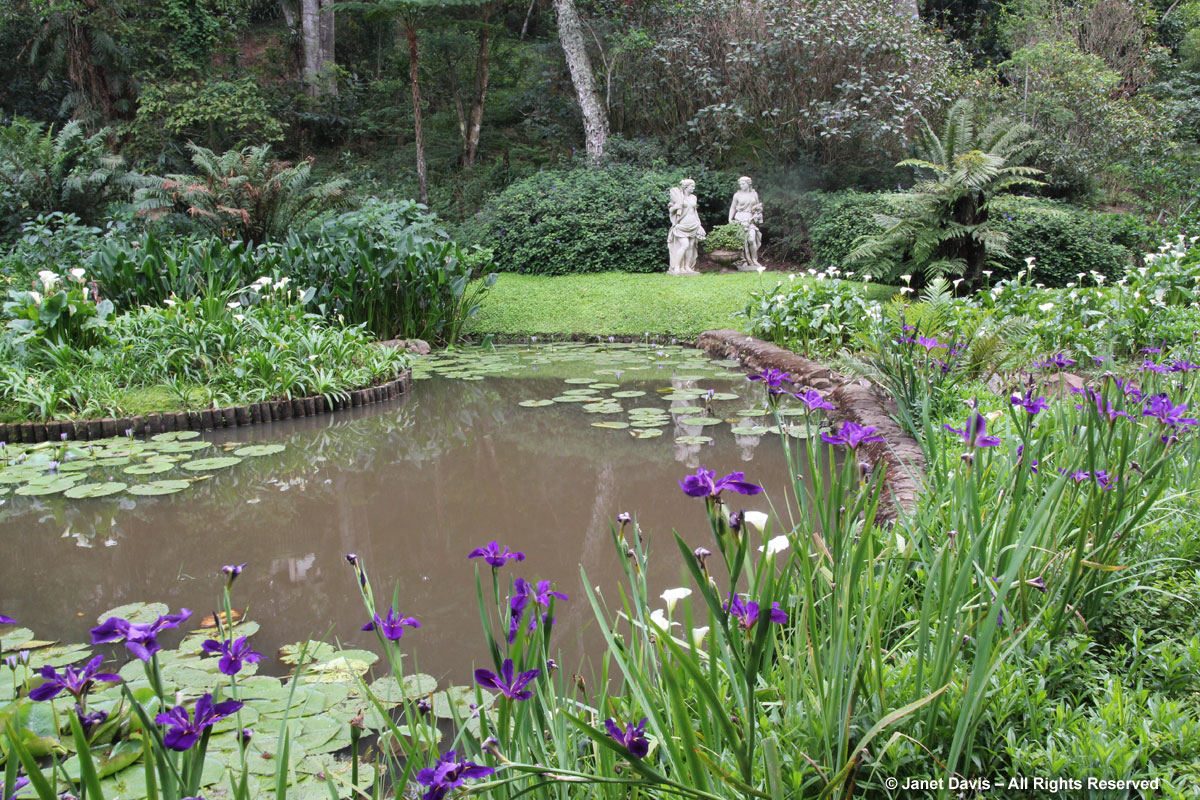
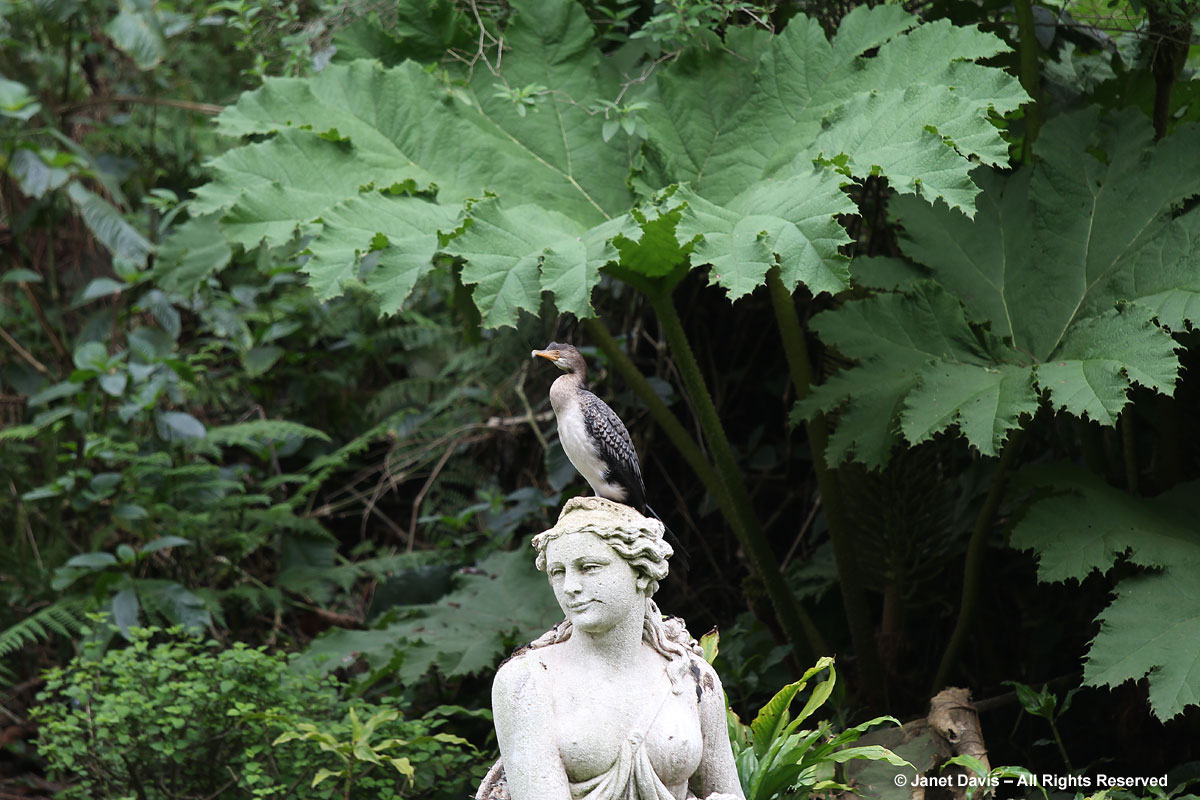
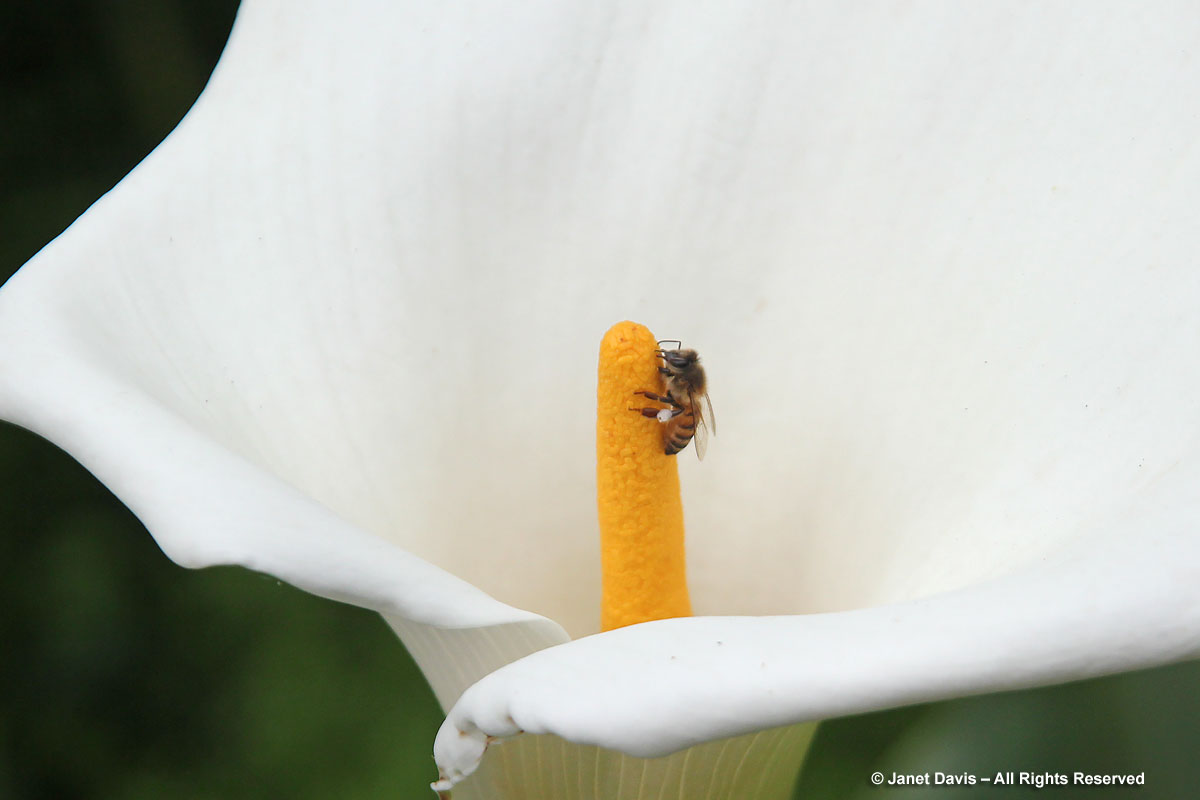
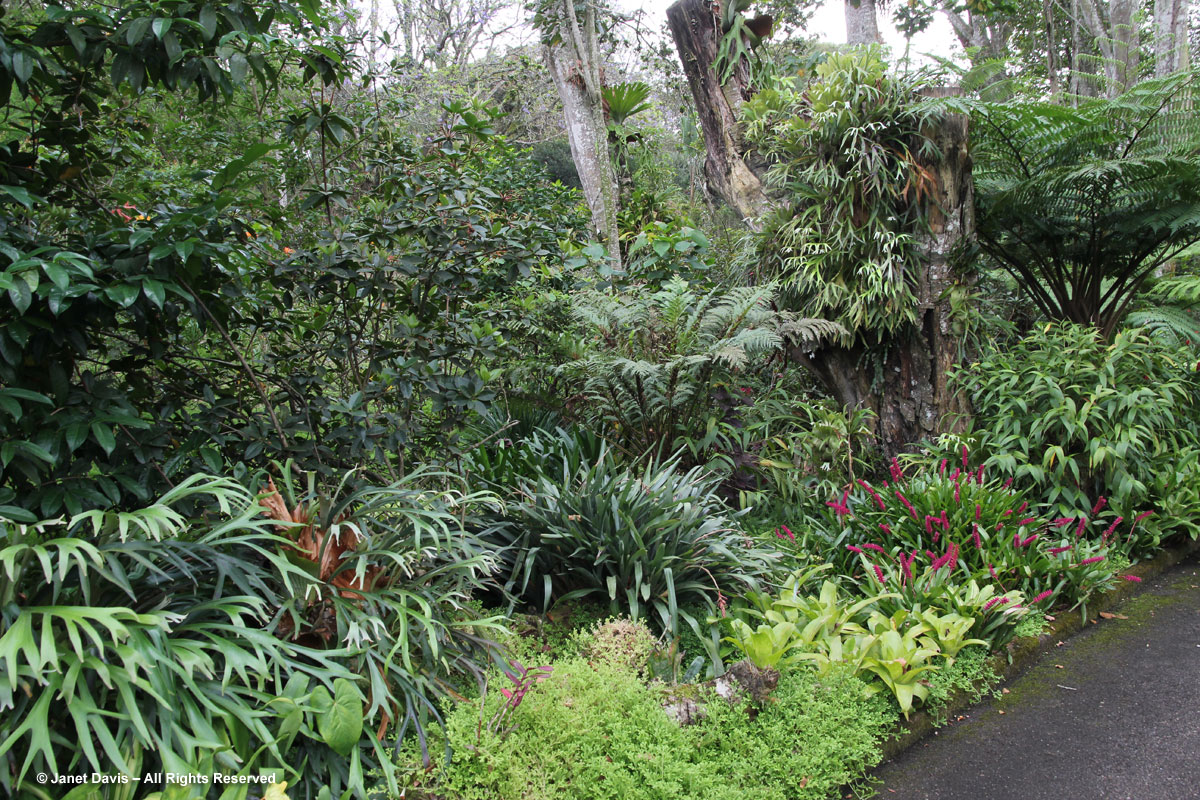
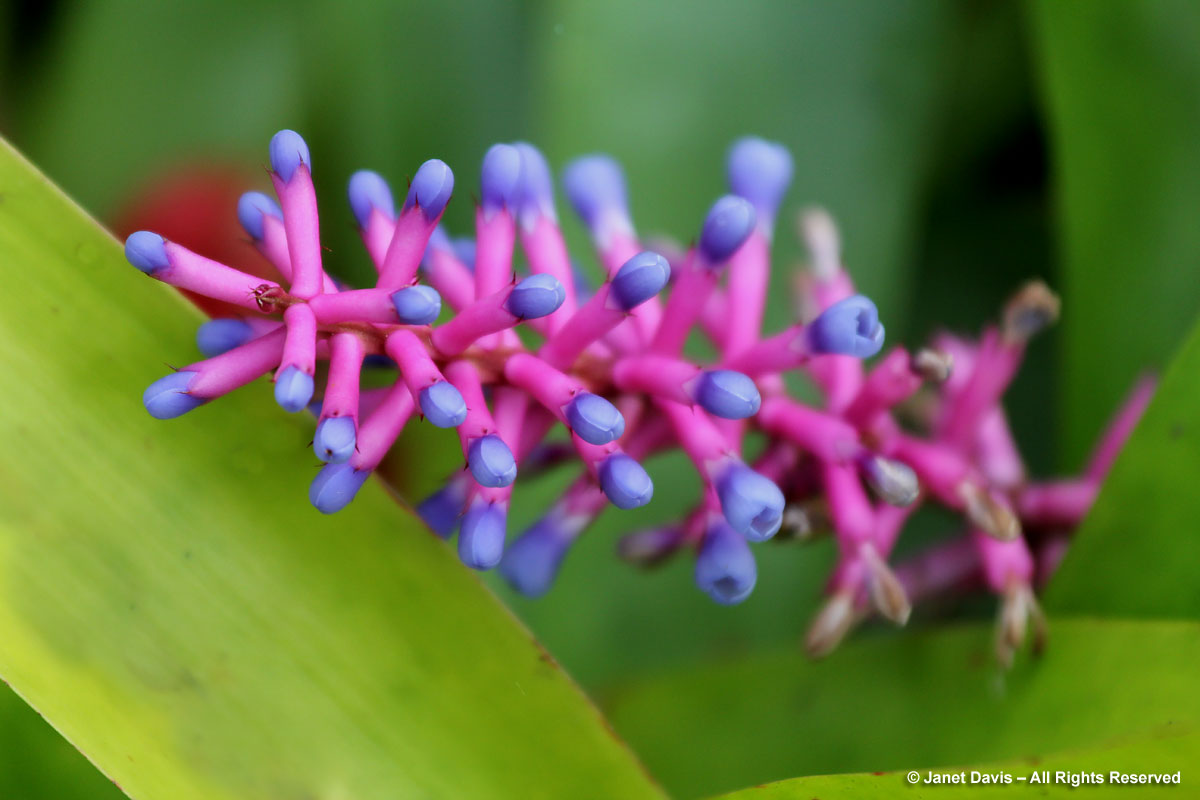
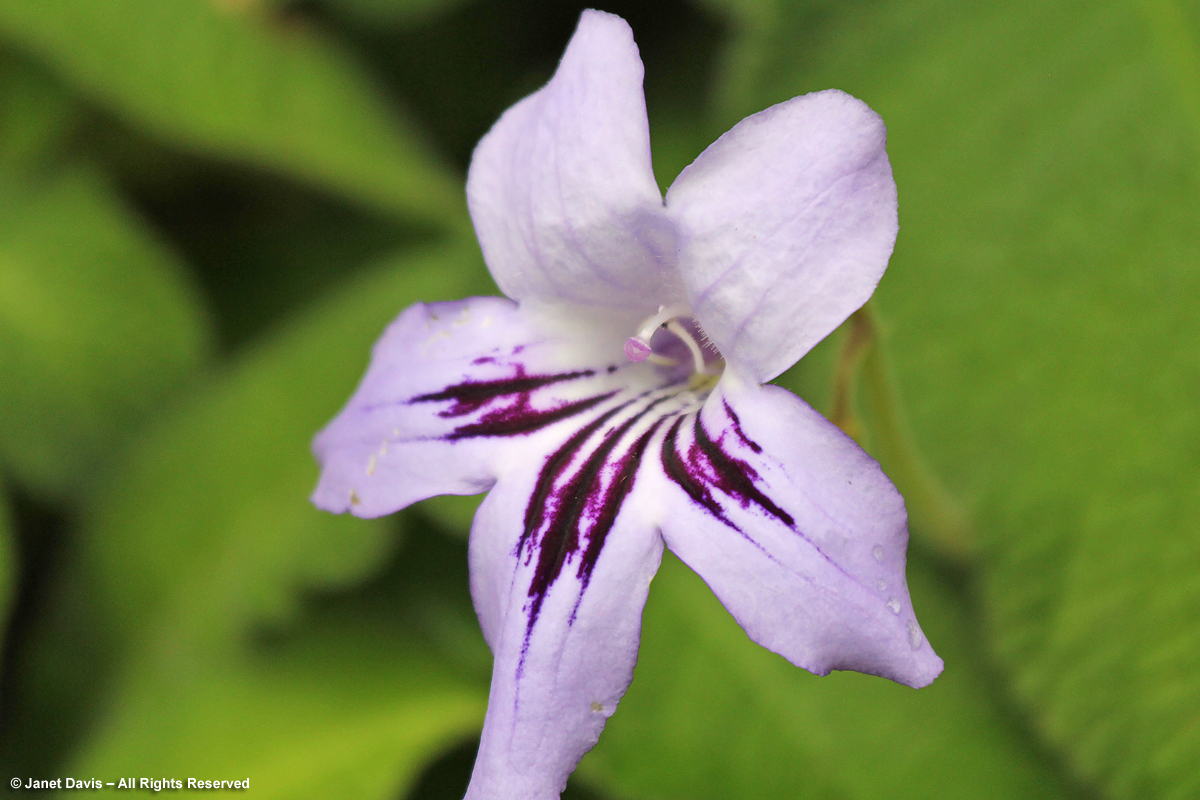
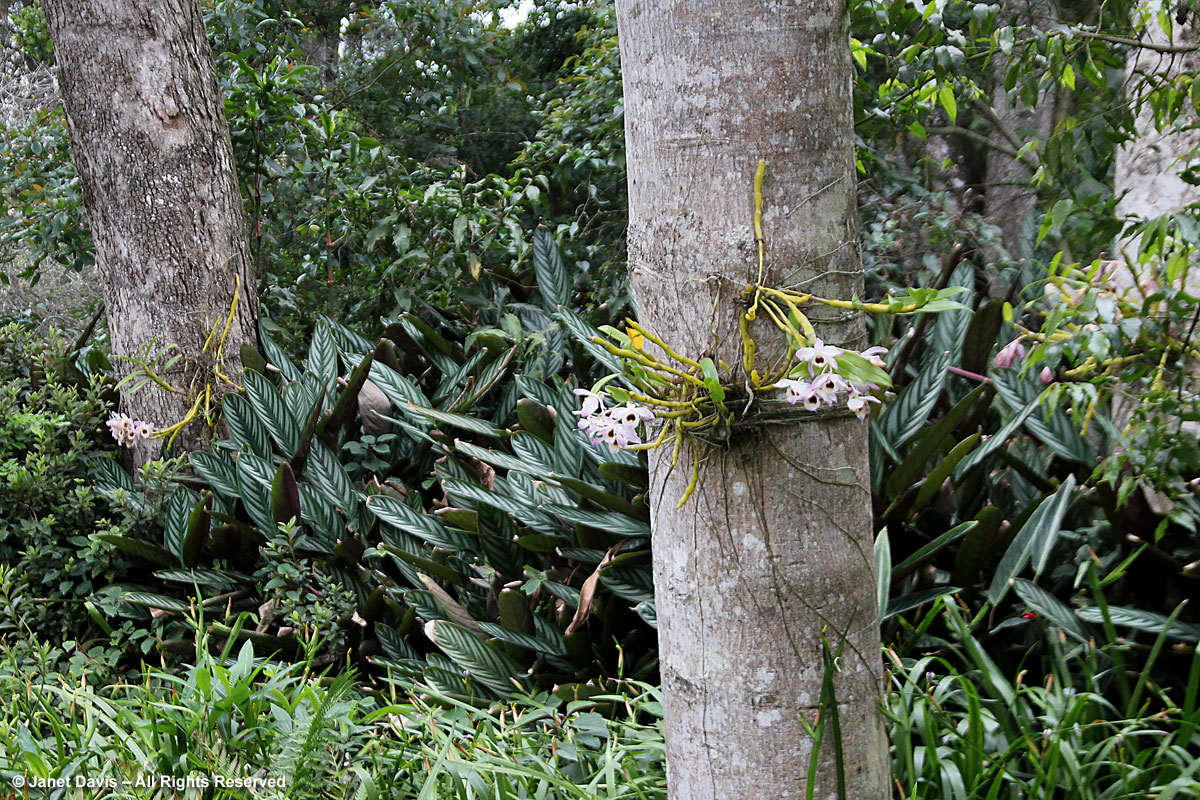
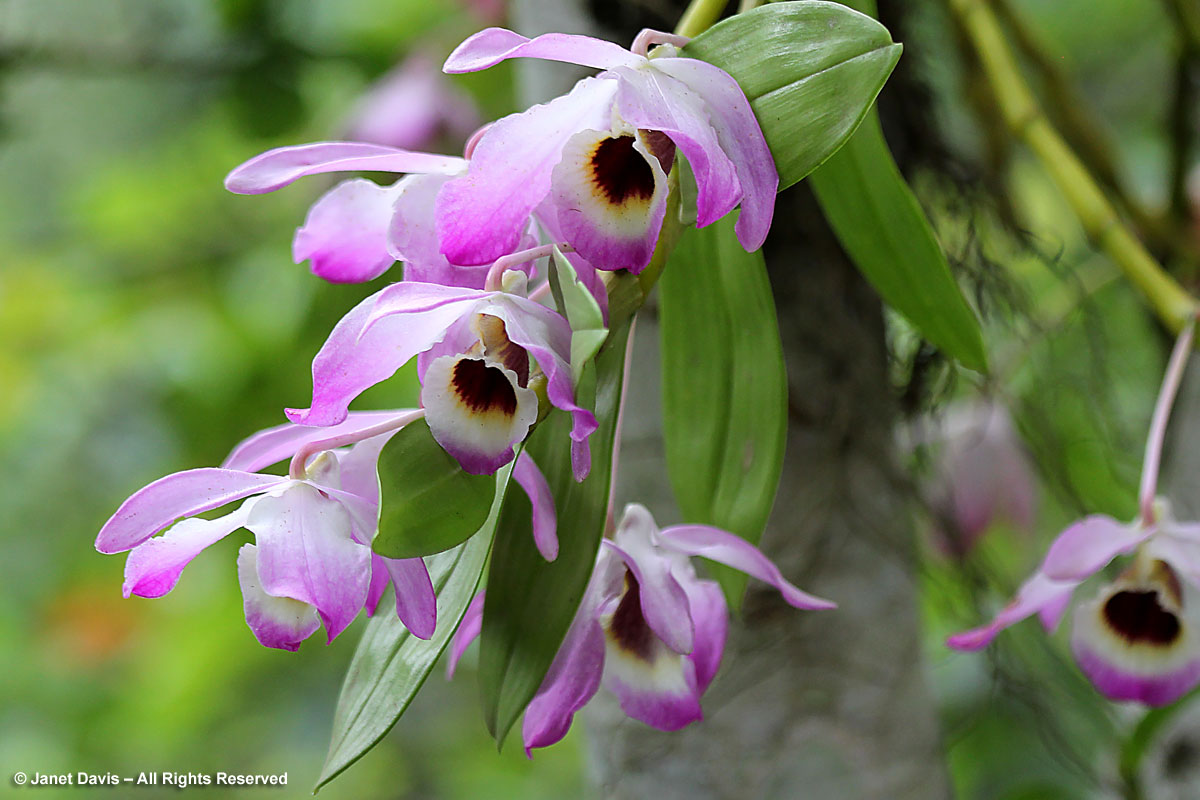
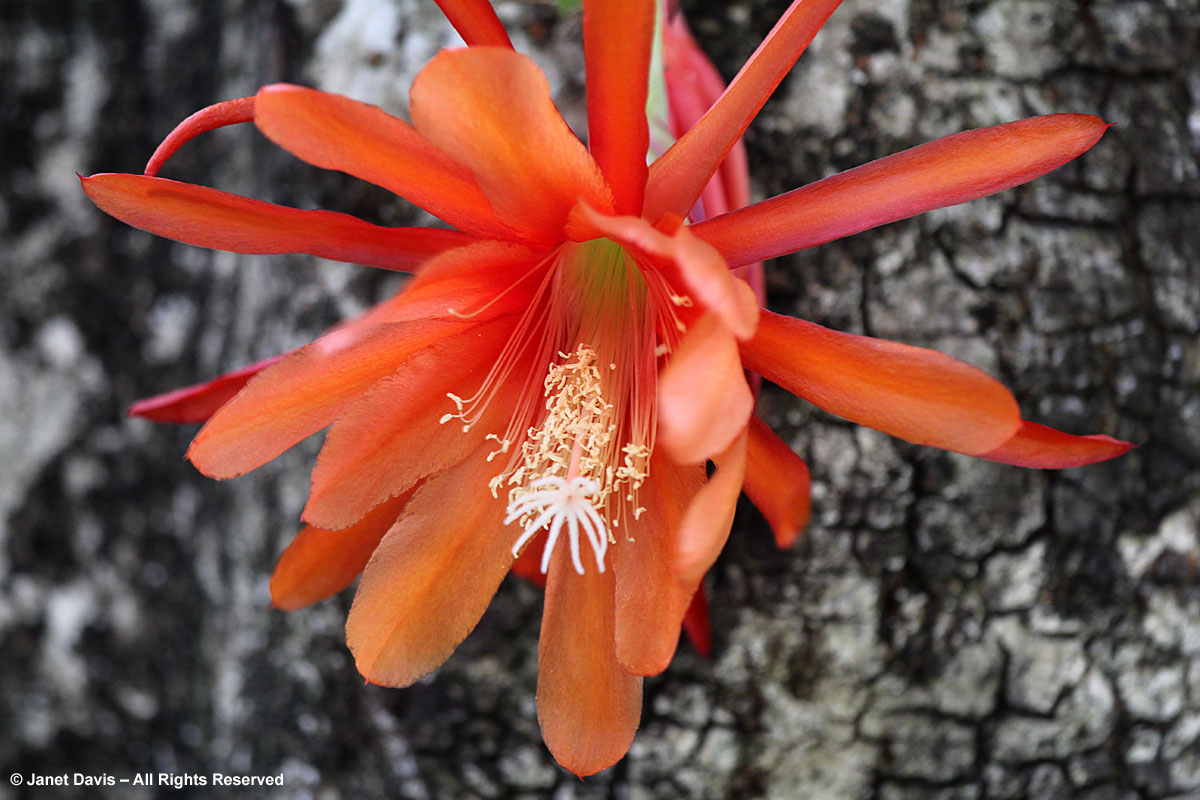
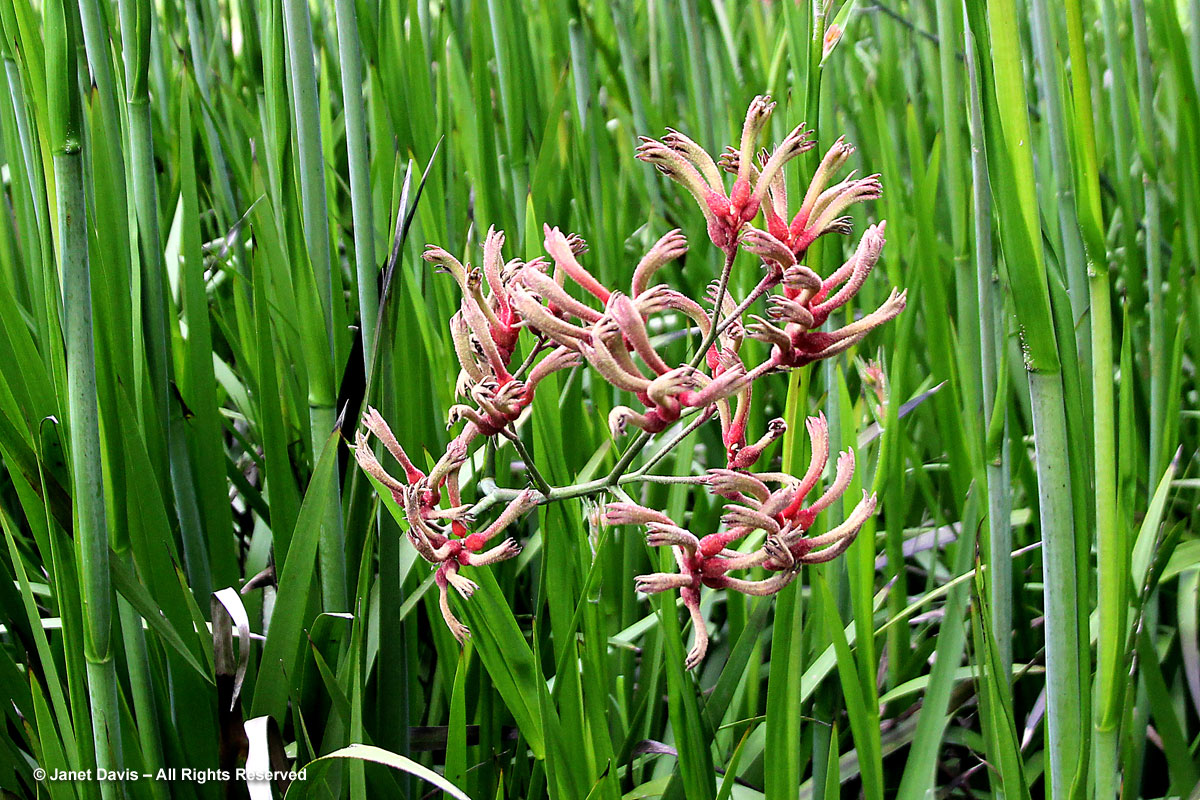
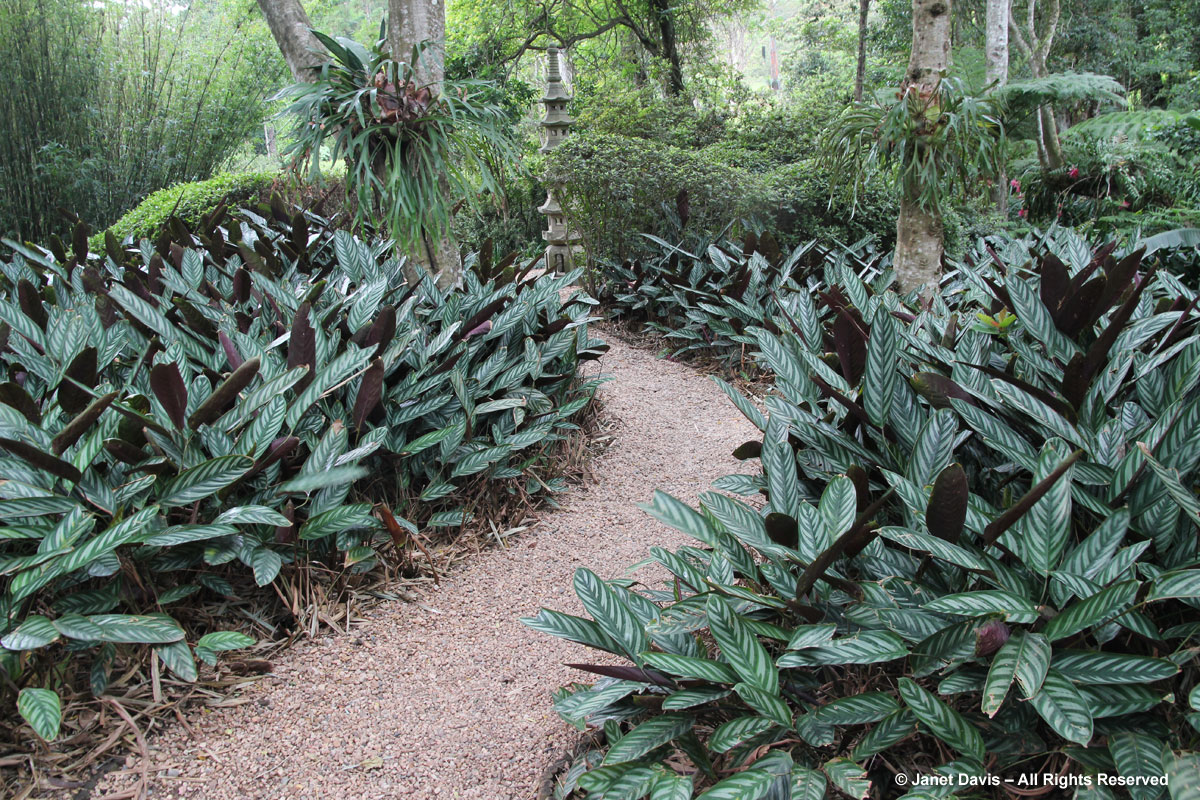
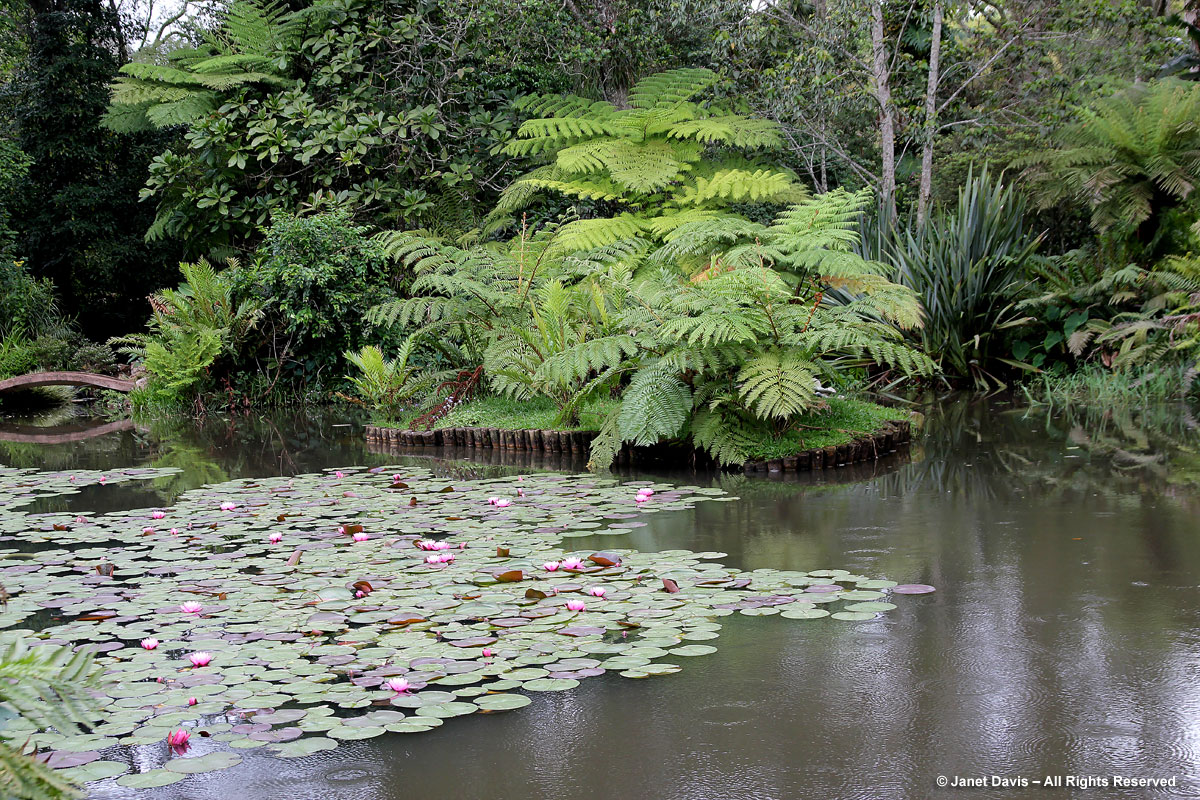
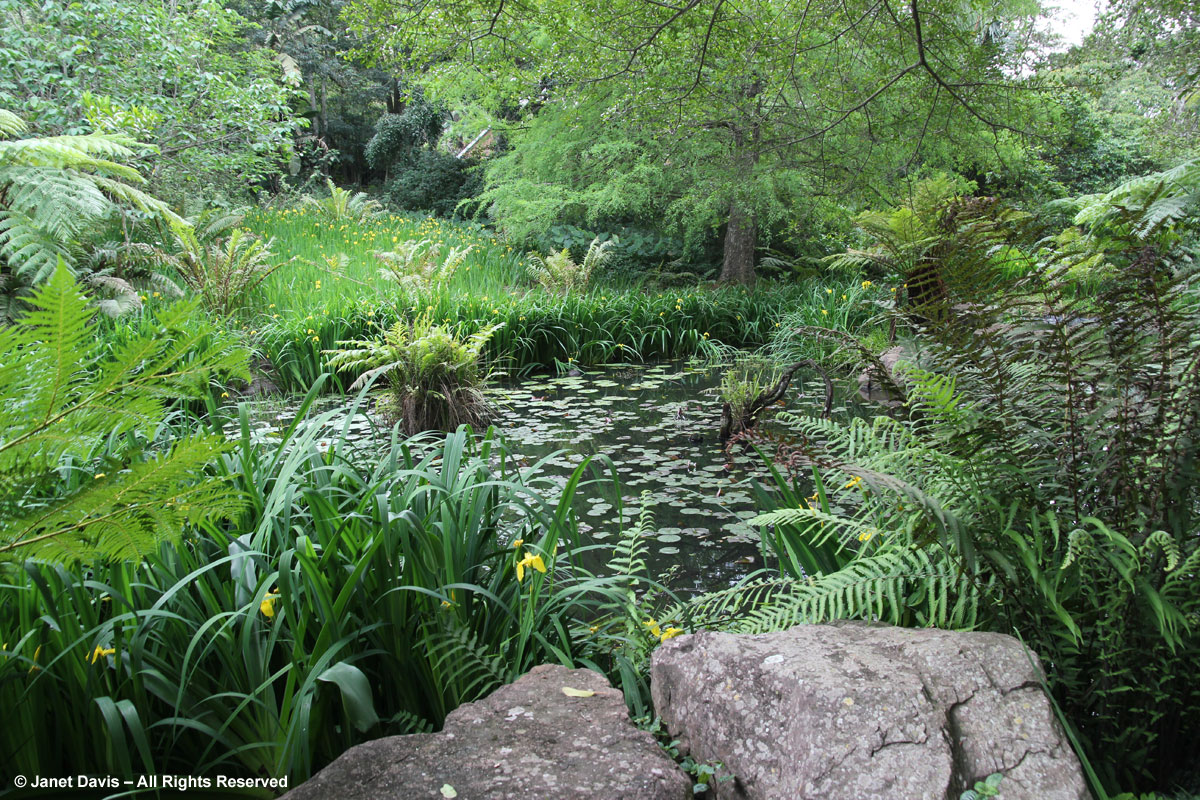
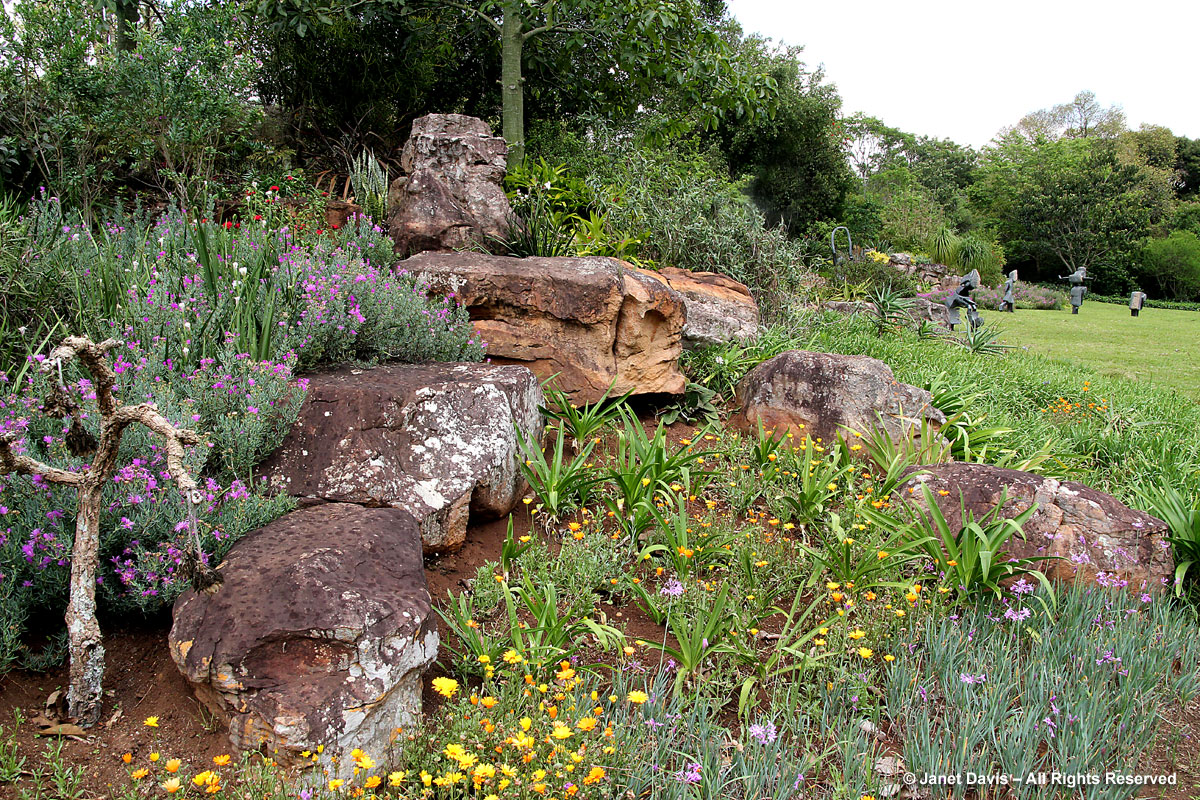
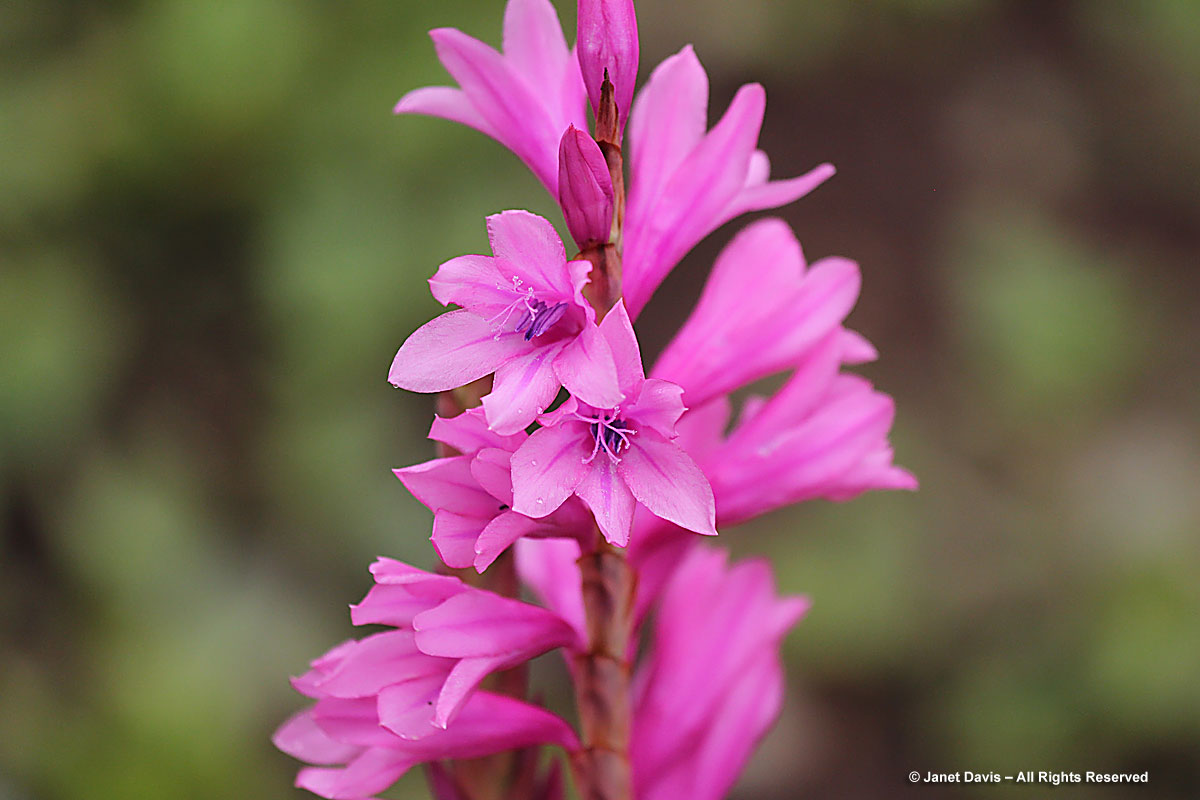
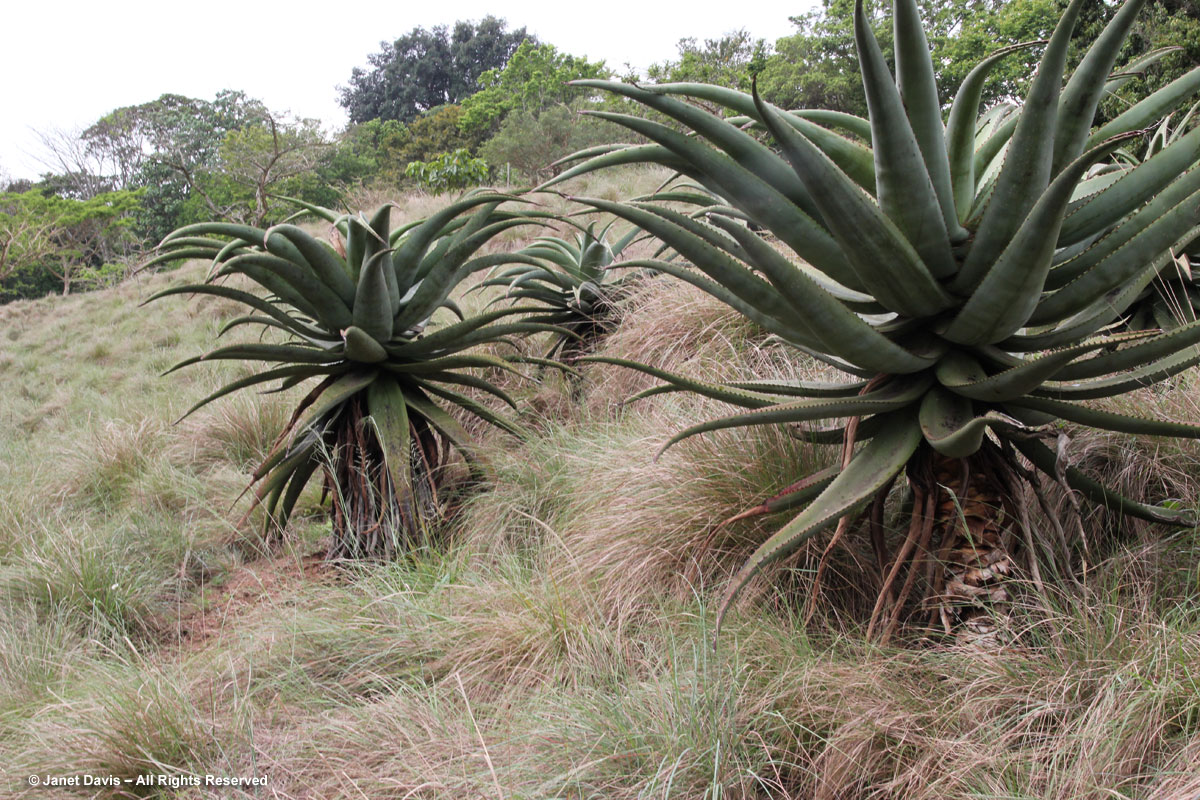
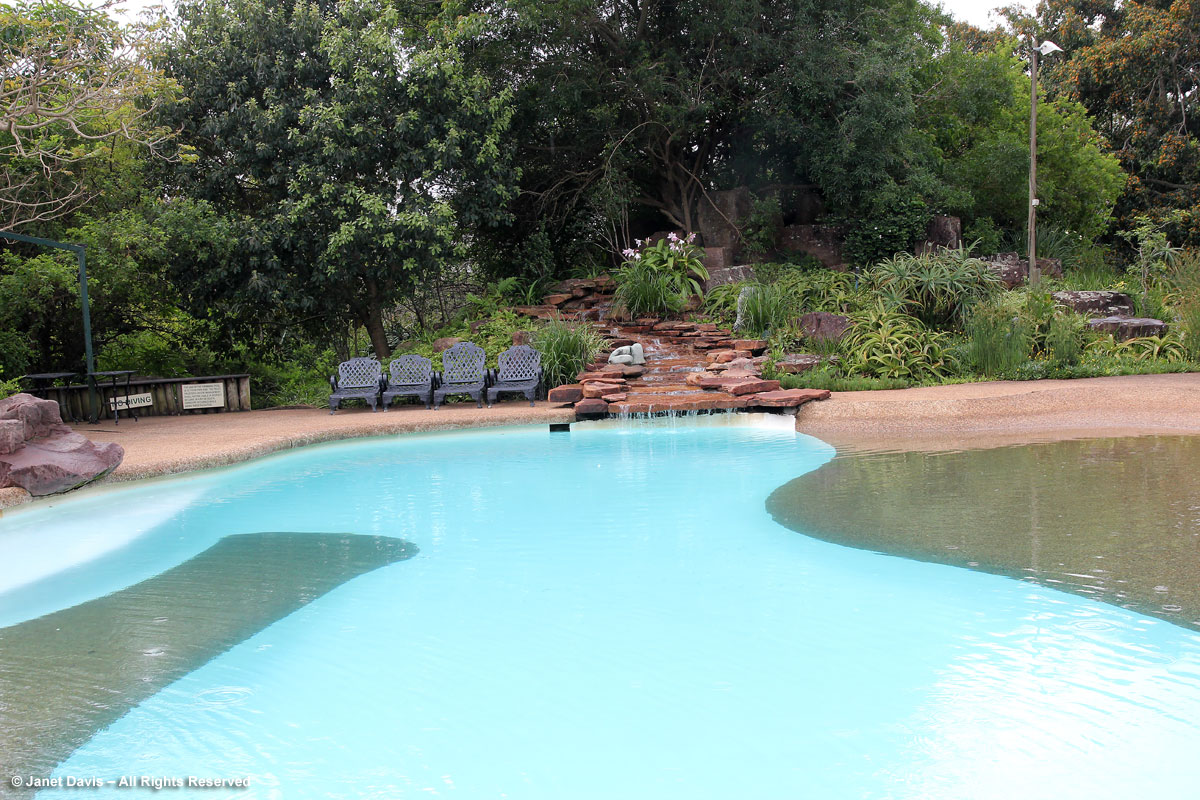
Dear Janet
I have only recently seen your post with regards to your article entitled, in a fern valley at Makaranga and your beautiful photographs contained therein. Your query of ” Who was George Walters?” I am alive and well, 80 years young in fact. I am passionate about all plant life and visit Makaranga every Thursday as a volunteer to work with the horticulturist to maintain the high standard of the garden. My son, Andrew Walters, was the first curator horticulturist of Makaranga Gardens for over 3 years until his sad passing with Encephalitis a few days before his 34th Birthday in February 2007. The cycads I had collected over a period of 30 years as a member of the Cycad Society of SA. Legally exchanging seedlings and grown from seed. I decided to donate my collection to the gardens when I had to undergo major surgery in July 2005. I survived the surgery and the Cycad Garden is now a fitting memory to my son who was a passionate horticulturist. Kind Regards, George Walters
George – I am so sorry not to have seen this response, as it went into my spam filter. And I’m delighted that you found the article online and commented about it. I will add your comment to the story! Cheers.